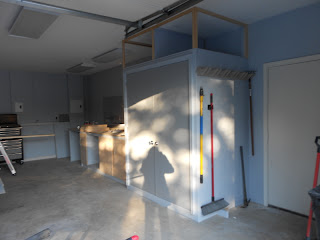
Archived here, original version is from the below links
Self-Seeding Crops You’ll Never Need to Replant
August/September 2010
http://www.motherearthnews.com/organic-gardening/self-seeding-z10m0hun.aspx
By Barbara Pleasant
 |
Letting crops flower and go to seed also supports beneficial insects!
ILLUSTRATION: ELAYNE SEARS
|
One of the characteristics of a truly sustainable garden is
that it produces at least some of its own seed. This is most often done
when gardeners select, harvest and store seeds until the proper time for
planting the following year. But some self-seeding crops produce seeds
so readily that as long as you give them time to flower and mature, and
set seed, you will always have free plants growing in your garden. You
can simply let the seeds fall where they are, or toss pieces of the seed
heads into the corners of your garden, or whichever area you want them
in — no harvesting, storing or replanting required. With most
self-seeding vegetables, herbs and annual flowers, you’ll just need to
learn to recognize the seedlings so you don’t hoe them down. Should
seedlings require relocation, you can simply lift and move them — after
all, they are sturdy field-grown seedlings.
In addition to getting
all the free garden plants you need (and some to share with family and
friends), nurturing self-seeders is also a great way to provide a
diversity of flowers that supply pollen and nectar for beneficial
insects. Self-seeding flowers, herbs and vegetables that show up in
early spring include arugula, calendula, chamomile, cilantro, dill,
breadseed poppies and brilliant red orach (mountain spinach).
Nasturtiums, amaranth, New Zealand spinach, and even basil or zinnias
appear later, after the soil has warmed.
Starting a new colony of
any of these annuals is usually a simple matter of lopping off armloads
of brittle, seedbearing stems in the fall, and dumping them where you
want the plants to appear the next season. It’s that easy. Most of the
seedlings will appear in the first year after you let seed-bearing
plants drop their seeds, with lower numbers popping up in subsequent
seasons.
Working with reseeding, or self-sowing, crops saves time
and trouble and often gives excellent results, but a few special
techniques and precautions are in order. Some plants that self-sow too
freely — especially perennials such as garlic chives or horseradish —
will cross the line into weediness if not handled with care.
Spring Seeds for Fall Crops
The
first group of plants to try as self-sown crops — both because they’re
the easiest and they’ll be ready the same year — are those that tend to
bolt in late spring. If allowed to bloom and set seed, dill, radishes,
arugula, cilantro, broccoli raab, turnips and any kind of mustard will
produce ripe seeds in time for fall reseeding in most climates. Lettuce
will take a little longer, but often gives good results in Zone 5 or
warmer.
One way to encourage self-seeders is to select vigorous
plants from a larger planting, and let these plants grow unharvested
until they bloom and produce seeds. This will work well enough, but it’s
often bothersome to have one lone turnip holding up the renovation of a
planting bed. To get around this problem, use a Noah’s ark approach:
Set aside a bed or row and transplant pairs of plants being grown for
seed into the ark bed. As the weeks pass, weed, water and stake up
seed-bearing branches to keep them clean, but don’t pick from the “seed
ark” bed.
When seed pods dry and begin to shatter, gather and
store some of the seeds as usual for replanting next year (just in case
the reseeding effort isn’t successful). Shake and crumble the rest where
you want the next crop to grow, and pat the soil to get good contact
between soil and seeds. Or, simply lay well-broken seed-bearing branches
over a prepared bed and walk over them. This will shatter seed pods and
push seeds into the soil at the same time, and the stem pieces will
serve as a starter mulch. With fast-sprouting crops such as arugula, a
drenching rain or good hand-watering is all it will take to bring on a
lovely fall crop.
Many of the seeds that hit the ground will rot
or be eaten, but hundreds will survive winter and sprout in spring.
Their strength is in their numbers. When you sow a bed of cilantro, for
example, you might plant between 25 and 50 seeds. But when nature is in
charge, a single plant may shower your garden with a thousand fresh,
plump seeds. Cilantro seedlings are easy to dig and move, and they make
well-behaved “weeds.”
Managing Annual Self-Seeding Crops
Many
annual crops will reseed themselves if you leave them in the garden
long enough for the seeds to mature and the fruit to decompose. Annual
veggies that frequently reseed and provide volunteer seedlings include
winter squash and pumpkins, tomatoes and tomatillos, watermelon, and New
Zealand spinach.
There are two issues to consider when managing
this band of garden volunteers: disease and location. The two most
serious diseases of potato and tomato — early and late blights — can
actually be perpetrated by encouraging disease-carrying volunteer
plants. Especially if you saw late blight in your garden the previous
season, you should seriously consider breaking the disease cycle by
digging up and composting potatoes that sprout from the previous year’s
patch, along with all volunteer tomatoes and tomatillos that appear
early in the season.
However, sometimes in late summer, I do adopt
tomato volunteers that have a potato-type leaf, because I know what
they are. ‘Brandywine’ is the only potatoleaf tomato variety I’ve grown
in the last five years, so any potatoleaf volunteers are highly likely
to be ‘Brandywines.’ You also can recruit healthy volunteer tomatillos
based on their distinctive leaf shapes. I locate these foster children
around the garden as single plants, spaced far from my main ripening
crop. Or you can consider moving volunteers to containers and growing
them outside of your garden as a disease safety precaution. With late
blight, it’s better to be safe than sorry.
Volunteer Veggies
If
you’re growing open-pollinated (OP) varieties, it can be fun to let
volunteer winter squash, pumpkins, gourds and watermelons ramble along
the garden’s edge, or scramble over wire fencing. (Remember that seeds
from hybrid varieties usually won’t grow “true to type.”) Check the
plants weekly for signs of powdery mildew disease, which is a common
problem with older open-pollinated varieties. Squash or pumpkin plants
that show signs of powdery mildew before the fruits have set should be
pulled out, but don’t worry if the white mildew patches appear later on
when the fruits are almost ripe. The plants will still bear a good crop.
If volunteer winter squash are always a part of your garden’s landscape
because so many seeds survive in your compost, you can introduce
powdery mildew resistance to your local population by growing OP
varieties which are resistant to powdery mildew, such as ‘Honey Nut’
butternut and ‘Cornell’s Bush Delicata.’
Controlling Rampant Self-Seeders
Several
useful herbs and greens reseed with such abandon they must be handled
as potentially invasive plants. Plants behave differently depending on
the climate, but in general, expect the following crops to become
obnoxious if not given appropriate discipline: borage, chives, garlic
chives, edible docks and sorrels, herb fennel, lemon balm, horseradish
and valerian. Here are the house rules:
- Grow only as many plants as you can monitor.
- Don’t allow seeds to be shed in your garden without your permission. This is done by pruning off flowers or immature seed heads, many of which make fine cut flowers.
When
experimenting with herbs from around the world, I have learned to be
cautious, because one year’s seed can be many years’ weeds. Start with
small plantings of nigella, perilla, and seed-producing sorrels and
docks to make sure you can keep them under control. Intervene early
should a reseeding plant you don’t want start popping up everywhere.
Weed ruthlessly until it’s gone, because ill-mannered thug plants have
no place in a well-managed garden.
34 Easy Self-Seeders
Herbs: basil, chamomile, cilantro, cutting celery, dill, parsley
Vegetables:
amaranth, arugula, beets, broccoli raab, carrots, collards, kale,
lettuce, orach, mustards, New Zealand spinach, parsnips, pumpkin,
radish, rutabaga, tomatillo, tomato, turnips, winter squash
Flowers: bachelor button, calendula, celosia, cosmos, nasturtiums, poppies, sunflowers, sweet alyssum, viola
Bountiful Biennials Set Seeds in the Spring
If
you can get them through winter in good shape (a challenge north of
Zone 7), openpollinated varieties of beets, carrots, collards, kale
(especially Russian strains), broccoli, parsnips and parsley can be
added to your list of self-sown crops. These crops produce their seeds
in the second year. Cold frames or low tunnels work surprisingly well at
enhancing the winter survival of these plants, or you can try
replanting stored beets, carrots or parsnips in late winter, as soon as
the soil thaws.
To get prompt, strong flowering and seed
production from most biennial veggies, it’s important to have nearly
mature plants that have been exposed to at least six weeks of cold with
soil temperatures in the 40-degree-Fahrenheit range. In the spring,
warming temperatures and lengthening days trigger overwintered biennials
to flower profusely, eventually producing great stalks of flowers for
bees and beneficials, followed by thousands of seeds — a single parsley
plant may shed the equivalent of 10 packets of seeds. You will see most
of these seedlings in the first two seasons after a reseeding. By the
third year, it’s time to repeat the drill.
The best time to plant
biennial seeds is late summer to early fall, using the seed ark approach
described above. For example, you might grow pairs of carrots, Russian
kale and parsnips together, and protect the young plants through winter
with a low plastic-covered tunnel. By midsummer the following year, you
should have enough fresh seeds to save and scatter where you want new
seedlings to grow, just in time for fall planting.
Managing Self-Seeders
- In
the fall, toss seed heads wherever you want seeds to germinate. Or,
next spring, transplant volunteers to the spots where you want them to
grow.
- Be sure not to hoe “weeds” too early in the spring.
- Learn to identify the self-seeder seedlings.





















 Archived here, original version is from the below links
Archived here, original version is from the below links
